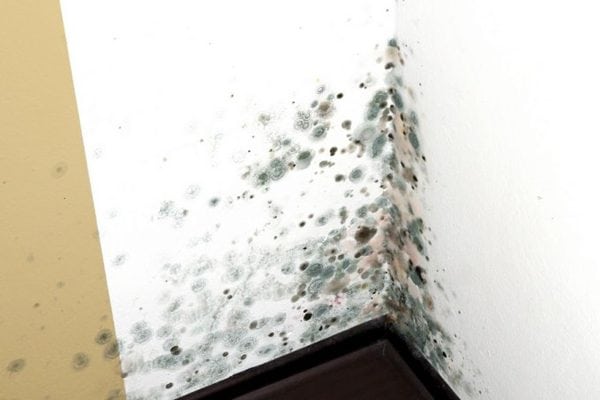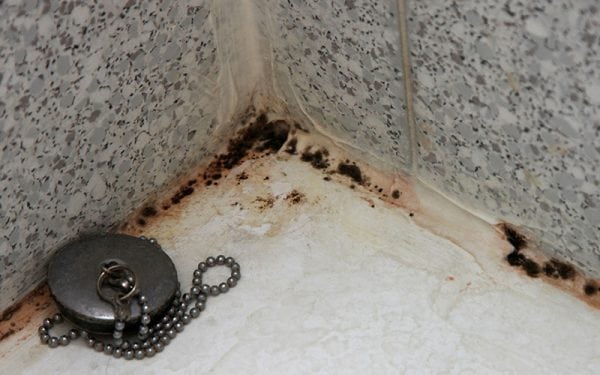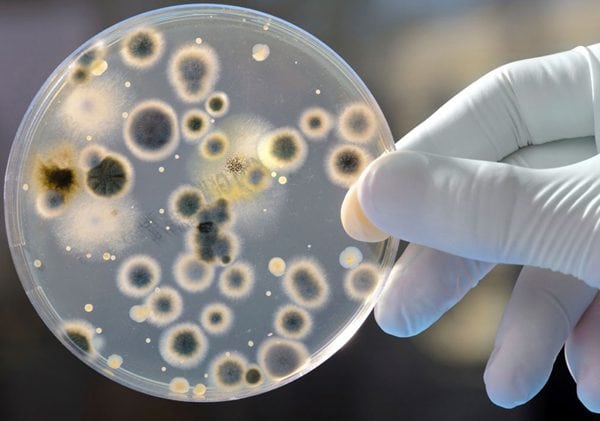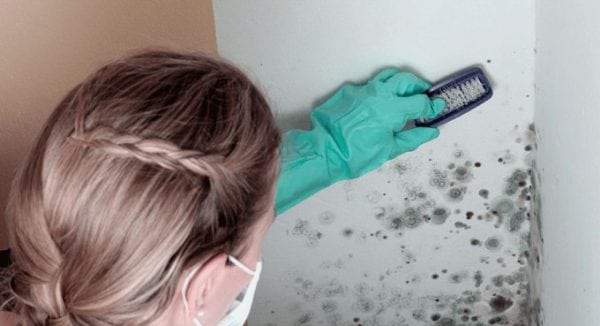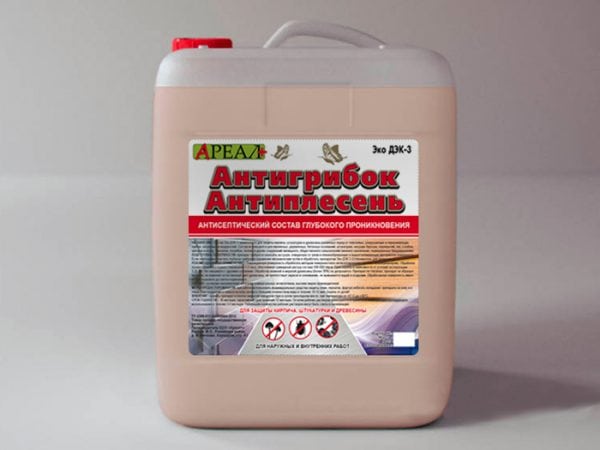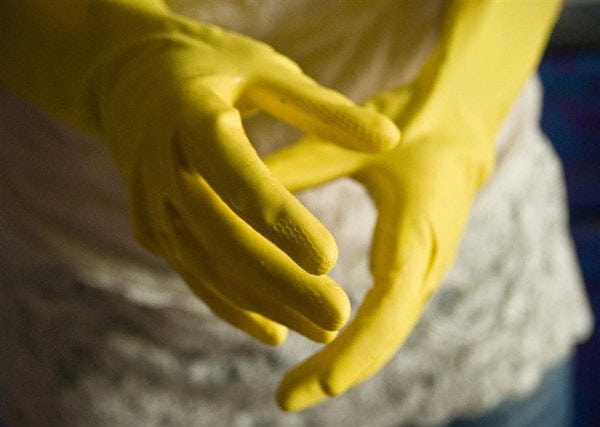The bathroom is the most vulnerable place in the house for the formation of fungus, almost an ideal place for its emergence and reproduction. The main reason for this phenomenon lies in the increased humidity, which is characteristic of the bathroom. It is necessary to fight the fungus, but it is even better to prevent the possibility of its appearance. How to do this will be discussed in this article.
- Why mold is harmful
- Causes of the appearance of the fungus
- Ways to combat fungus
- Folk ways
- Professional antiseptic agents
- Prevention
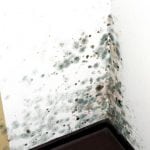
Why mold is harmful
There are many types of fungus, but the most common are three of them:
- moldy;
- blue
- decay.
The blue fungus is characteristic of wood, but not for bathrooms. Rot of brown, white and bacterial types also mainly spreads to wood, and usually it does not work out.
It is the mold that threatens the bathroom, which can be chosen by almost any material - concrete, brick, ceramic tile, paint and much more. Moreover, the mold may be in the most inaccessible place, for example, behind the tile, so the residents sometimes do not even know about the existence of the fungus.
Mold leads to the following negative consequences:
- The appearance of finishing materials is deteriorating (mold on tiles looks unattractive).
- A musty smell appears in the room.
- Structural materials gradually collapse (cracks appear in concrete or brick).
- There is a danger to human health.
The negative impact on human health is worth mentioning especially. Like any other fungi, molds release their spores into the environment. Since this happens in a confined space of the room (in this case, the bathroom), spores inevitably fall into the respiratory tract of a person. The result of spores getting into the respiratory tract is a number of pathological conditions and diseases, including:
- bronchial asthma;
- rheumatic pain syndrome;
- rhinitis;
- cough;
- headache;
- allergic skin reactions;
- nausea.
Thus, the removal of the fungus is a complex problem, the solution of which ensures a decent appearance of the bathroom, the strength of construction materials and the health of residents.
to contents ↑Causes of the appearance of the fungus
As was said at the beginning of the article, the main condition for the development of the fungus is a high level of humidity, and not just high, but exceeding 70-80%. The ideal microclimate for the occurrence of fungus occurs at a moisture level of 90-95%. A significant role in the formation of mold is played by insufficient ventilation of the bathroom.
The next factor that favors mold is insufficient waterproofing of the room. If the bathroom is often hot (more than 20 degrees Celsius), the appearance of the fungus is only a matter of time.
When suitable conditions arise, spores, combining with a moist surface, begin to grow rapidly, creating colonies. If nothing is done, small black, green or brown spots of mold gradually grow and occupy more and more large areas. At the same time, spores grow not only in breadth, but also penetrate into the material with thin threads.
The fungus can affect both the walls and the floor of the bathroom. Usually mold is formed, first of all, at the seams between the tiles.
to contents ↑Ways to combat fungus
If mold has appeared, measures must be taken to remove it. This can be done with the help of branded antiseptics, as well as folk remedies.
Removing the fungus is as follows:
- First of all, we determine the source of the fungus. The mushroom picker can be located in an inaccessible place, for example, behind tiles or under plumbing. At the same time, a plaque on the tile can only appear as a consequence of an invisible at first glance mycelium.
- When the outbreak is detected, we begin to scrape off the mold. We clean the scraped place with a hard-bristled brush. When searching for the source of the problem, it is recommended to tap the tile to detect all voids. Where they are available, you need to remove the tiles and do a sweep.
- If a fungus is found in the grout between the tiles, the entire grout mass is removed.
- We clean the cleaned places with a construction hairdryer or a powerful heater. It is strongly not recommended to use hot water to warm the affected areas. Warming up should only be dry.
- We process walls with antiseptics and waterproofing agents.
- We warm the air well in the bathroom.
Folk ways
One of the most effective means of the national arsenal is creosote, made from tar. This material has long been treated with structural materials from decay. Creosote is an oily yellow liquid with a strong odor. The material is sparingly soluble, so alcohol will be needed to dilute it.
Note! Excretions of creosote are dangerous to health. Therefore, after use, traces of the substance must be removed using household cleaning products.
Vinegar is also popular as a fungus control agent. We are talking about ordinary white vinegar, which is used in cooking. Vinegar is a product of natural origin and is completely safe for health. The only drawback of this remedy is the strong smell, which, however, soon disappears.
To remove mold, you need to blot a sponge in vinegar and grind problem areas with it. After the surface has dried, it must be treated with a brush with a stiff bristle. Cleaning ends by flushing the surface with warm, clean water.
Another effective remedy is hydrogen peroxide. The solution has a bactericidal effect. The lack of peroxide is that it leaves whitish marks on colored coatings. Although hydrogen peroxide is non-toxic, a highly concentrated solution (more than 3%) can cause skin burns.
In addition to the above, several other tools have shown effectiveness, including:
- bleach for linen;
- baking soda;
- bleach-based cleaners;
- ammonia;
- copper sulfate;
- boric acid;
- inkstone;
- tea tree oil.
The most unsafe means include chlorine solutions. To ensure the safety of the skin and respiratory tract, when using such funds you need to use protective gloves and a respirator.
to contents ↑Professional antiseptic agents
The greatest result in the fight against mold can be achieved using branded antiseptic drugs. You can buy them in hardware stores. Below are a few popular fungus removal formulations:
- Antiseptic preparation "Antifungal" from the company "Areal +". This antiseptic can be used both as a proactive means, and in the case of foci of mold. The solution "Antifungal" is applied with a brush or roller to a wide variety of surfaces, including concrete, brick, wood, plastered. As a prophylaxis, “Antifungal” is added to wallpaper glue or paints and varnishes.In this case, the concentration of antiseptics should not exceed 1% of the total volume. The drug is environmentally friendly and lack of toxicity. "Antifungal" is sold in plastic bottles containing 1 or 10 liters of the composition.
- The company "Fortified Services" produces an antiseptic under the brand name "Isocide". The drug is used to prevent the appearance of mold on tiles, wood, concrete, plaster, brick and stone. In addition to the mold, Isocide successfully fights against microscopic algae, blue and other microorganisms unsafe for human health. "Isocide" goes well with water-soluble paints and varnishes. The drug can be used at different stages of repair work, adding it to paints, cement mortar, chalk mixtures.
- The company "Stenotech" launched the production of emulsion based on latex under the brand name "MILLKILL". The emulsion prevents the formation of molds due to the antimicrobial agent contained in it. The emulsion shows the greatest effect when processing walls with small pores. "MILLKILL" is safe for health and therefore can be used in any residential area. Before applying the product, it is recommended to remove traces of mold with a hard-bristled brush.
- The DALI antiseptic belongs to the class of universal preparations, since it can be used both as a prophylaxis and to remove an existing fungus. The drug is a colorless solution - environmentally friendly and non-toxic. The versatility of DALI is also evident in its effectiveness in the fight against wood pests. Available in 5 liter containers. 250 milliliters of the drug will be needed per square meter of surface (100 milliliters per square meter is enough for preventive purposes).
Note! Mechanical removal of mold will not bring the proper result if it is not supported by chemical surface treatment.
Before using antiseptics, it is recommended to test its compatibility with finishing materials.
Important! Antiseptic treatment is performed only if the skin is protected (rubber gloves) and the respiratory tract (respirator).
Prevention
To prevent the occurrence of fungus, it is necessary to adhere to a number of requirements:
- maintain normal humidity (up to 30%) - a heated towel rail will help;
- establish ventilation of the bathroom;
- Do not close the door to the room after taking a shower;
- do not dry laundry in the bathroom;
- check plumbing for leaks;
- prevent wet pipes (there is no evaporation on plastic pipes);
- often wetted joints need to be treated with sealant;
- Do not keep open containers with water in the bathroom;
- carry out preventive treatment of problem areas with antifungal drugs;
- during repairs, first treat the surfaces with an antiseptic and only then glue the tiles.
Compliance with these simple recommendations will most likely avoid the formation of mold. It is always easier to anticipate the occurrence of a problem than to eliminate its consequences later.

